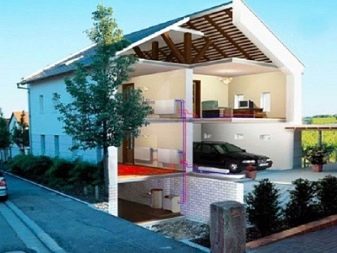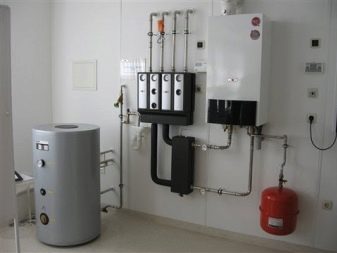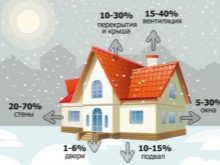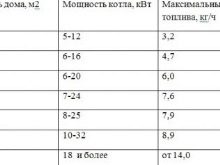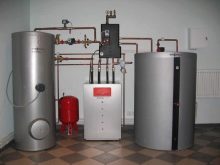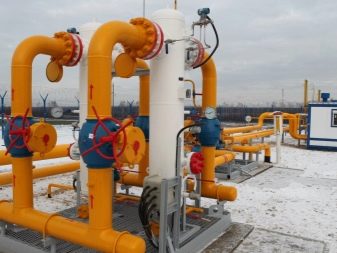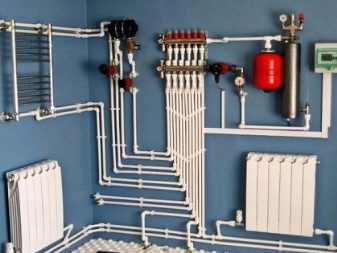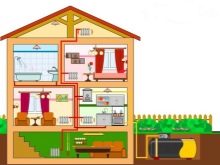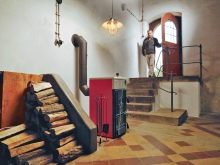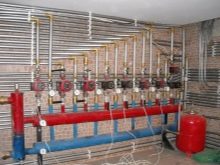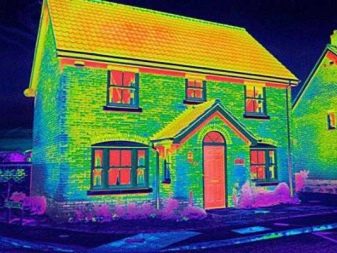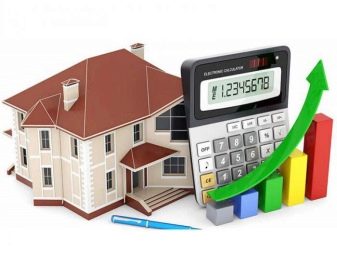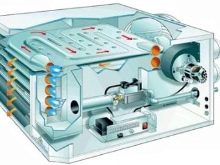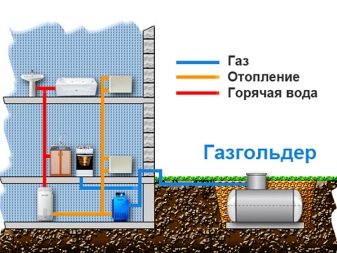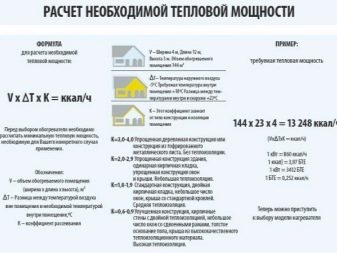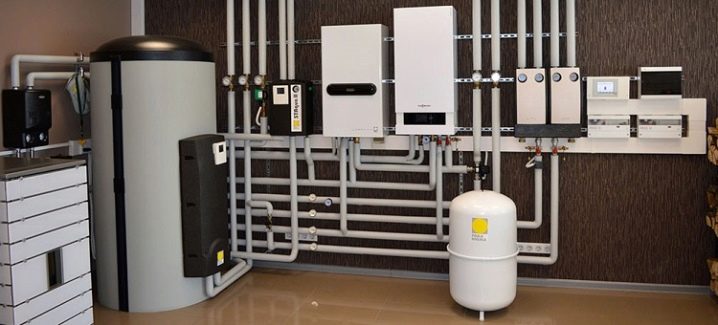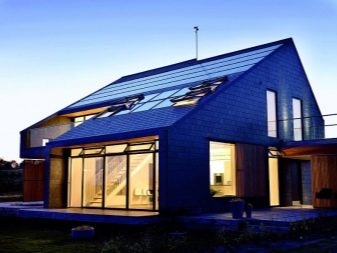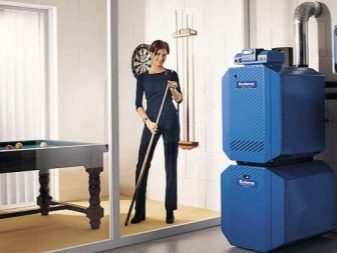How to determine the gas consumption for heating the house?

During the arrangement of the heating system, as well as when choosing the most appropriate energy carrier, it is necessary to calculate in advance the future gas consumption for heating the whole house or other heated area. Given the constant increase in the cost of gas, heating large country houses and cottages today is very expensive. Because of this, it is necessary to find all new and new ways to save the cost of heating homes with individual heat sources, which are heated by gas. For this reason, all developers and homeowners are trying to calculate in advance the possible costs of heating, and then buy the appropriate boiler or other equipment.
Features of the equipment
Today, the most purchased type of equipment for heating is gas, as it is less expensive with maximum benefit. Most often, consumers are interested in such equipment characteristics as the amount of gas consumption for heating a building, since this makes it possible to select a suitable heating system.
If you are going to select the type of equipment for heating your home, then first pay attention to the following indicators:
- the size of the entire territory of the house;
- number of floors;
- whether the building was insulated before, how good the insulation is at the moment;
- power which will be at the chosen heating system.
As well as experienced experts claim that the design of a future heating system directly depends on the main factor affecting the highest fuel consumption during heating.
If your choice is on a gas boiler, then the main criterion for its selection is its work capacity. It is on this factor that both the efficiency of the overall heating system and the upcoming consumption of energy carrier depends.
Gas is rather quickly consumed in boilers, and this is affected, besides power, by a number of factors, namely:
- the climate of the territory where the heated building is located;
- all sorts of features in the architecture and construction of the heated building;
- the size and height of ceilings in a heated building;
- the quality of possible insulation, as well as its presence in principle;
- number of windows, their type, size and more.
The power rating of the boilers indicates their maximum capacity, and they should be a number higher than the required characteristics so that in case of an overload there are no problems. For example, if, after conducting all the necessary research and calculations, you set the criterion of equipment at 12-13 kW, then you will need to buy at least 15-16 kW.
These actions are carried out in order to protect users from possible accidents and emergency situations.caused by overvoltage and the like. Since in the characteristics of heating equipment most often indicate gas consumption in this form - m³ / h, this type of calculation of power may not correspond to certain parameters. This type of calculation of indicators gives very controversial results, without the ability to accurately calculate the future gas consumption, and not only fuel economy, but also a possible reduction in heat consumption in general depends on this.
When you choose your equipment, try to pay attention not to the declared power of the heating system, because it is very rarely used for maximum possibilities, but to the thermal power. It is on the latter that the high-quality heating of the house and the replenishment of all its heat losses depend. To calculate the above-mentioned indicator, which the developer does not usually indicate, you should simply consider the ratio of 1 kW of heat energy per 10 m2 of a heated building.
This approach is a good alternative; however, it still cannot accurately determine the actual conditions that may arise in the heated premises under the influence of the factors mentioned above. If you want to be 100 percent sure in the choice of heated equipment, then you need to calculate the gas flow rate using a more detailed formula, which will be discussed later.
Standards and standards
The main and main norm should be considered the recommended power of the boiler, since it must always exceed the calculated figures. The main parameter during the calculation of fuel consumption, which is used on the basis of cottages and country houses, is considered to be the heat loss of the building.
If the owners of the building took care of this point during the construction, it is just fine, but more often than not, nobody considers this condition until it is time to choose equipment for heating. Knowing the heat loss for a house is a guarantee not only of choosing a good boiler, but also of minimizing future waste.
Gas consumption depends on the efficiency, as well as the power of the boiler. To achieve a reduced effect of gas consumption can be through different equipment, but each of them has its own subtleties.
Advantages and disadvantages
Today, there is a huge amount of various equipment that heats private houses, apartments and cottages with gas. But also each of them has its own positive and negative characteristics.
So that you can determine for yourself the best option, we offer you to consider a detailed description of the most popular types of heating.
- Trunk gas. The main disadvantage is the absence of this highway in the territory of a fairly large number of villages and villages in Russia. Because of this, in small villages it is impossible to heat the house with a gas boiler.
- Heating is electricity. To do this, you should buy equipment with a capacity of at least 10-15 kW, and not everyone can afford it. And also in the cold season the wires are covered with ice, and until the repair crews resolve your situation, you will have to sit in the cold. Very often, people complain that such brigades are in no hurry to come to small villages, because during times of bad weather, the priority is given to influential residents, and only then they.
- Installation of capacity - a multi-liter tank - for storage of gas filled. This type of heating is quite expensive, the cost of which starts from 170 thousand rubles. In winter, there may be a problem with the entrance of the tanker truck, since on the territory of the summer cottages the snow is cleared only on the central streets, and if you don’t have one, you will have to make your own way. If you do not clean, the cylinders will not be able to fill, and you will not be able to heat the house.
- Pellet boiler There are practically no downsides to this option of heating, except for the cost, which will cost at least 200 thousand rubles.
- The boiler is solid.This type of boiler is used as fuel coal, firewood and the like. The only disadvantage of such boilers is that they often fail, and for the best possible work, you need to have a specialist who could troubleshoot problems immediately after they appear.
- Diesel boilers. Diesel fuel today is pretty decent, so the maintenance of such a boiler will also be expensive. One of the negative aspects of a diesel boiler is considered to be an obligatory supply of fuel, which is enough in an amount of from 150 to 200 liters.
How to calculate?
It is possible to find out the consumption of blue fuel for heating a house by calorie indicators based on the management company. If this option does not work, then you can put a conditional figure in the calculations, but it is best to take it with some margin - 8 kW / m³. But also often there is a situation when sellers give information on the specific heat of combustion, expressed in other units, that is, kcal / h. Do not worry, these numbers can be converted to Watts just by multiplying the data by a factor of 1.163.
Another indicator that directly affects fuel consumption - This is the possible thermal load on the heating system, which is the heat loss due to the additional building structures of the building, as well as possible losses that are spent on heating the ventilation air. The most suitable calculation option is to conduct or order detailed and accurate calculations of all existing heat losses. If you do not have the opportunity for such methods, and will satisfy a rather approximate result, then There is an option to recalculate the "enlarged" method.
- With a ceiling height of up to three meters, you can count on heat of 0.1 kW per 1 square meter. m heated territory. As a result, a building of no more than 100 m² leaves 10 kW of heat, 150 m2 - 15 kW, 200 m2 - 20 kW, 400 m2 - 40 kW of thermal energy.
- If calculations are carried out in other units of measurement, then for 1 m³ of volume of a heated building 40-45 W of heat. Its load is checked by multiplying this indicator by the volume of all available heated rooms in the building.
The efficiency of the heat generator, which affects the most efficient use of fuel, is most often noted in a special technical passport of the equipment.
If you have not bought a unit for heating, You can take into account the data efficiency of gas boilers of different types from the following list:
- gas convector - 85 percent;
- boiler with an open combustion chamber - 87 percent;
- heat generator with a closed combustion chamber — 91 percent;
- condensing boiler - 95 percent.
The initial calculation of the use of liquefied gas for heating can be calculated using the following formulas:
V = Q / (q x Efficiency / 100), where:
- q is the caloric level of fuel (if it was not possible to obtain data from the manufacturer, it is advisable to set the generally accepted standard at 8 kW / m³);
- V — expenditure of the main gas to be found, m³ / h;
- Efficiency - the fuel efficiency of the currently available source of heat, written in percent;
- Q - the possible load on the heating of a private house, kW.
To accurately understand how this calculation goes, you should carefully look at an example of calculating the gas consumption in a building with an area of 150 m². The size of the load on the heating reaches 15 kW. According to the plan, this building should be heated with equipment with a closed combustion chamber, the efficiency of which reaches 92 percent.
Counting gas consumption for 1 hour in the most cold times, it is possible to get the following answer:
15 / (8 x 92/100) = 2.04 m³ / h.
Working 24 hours without a break, the heat generator will consume the following amount of gas: 2.04 x 24 = 48.96 m³ (for ease of measurement, it is desirable to round up to 49 cubic meters). Of course, during the heating season the temperature tends to change, so there are very cold days, and there are also warm ones. Because of this, the average daily gas consumption, which we found above, will need to be divided into 2, where we get: 49/2 = 25 cubic meters.
Having the data already defined above, it is possible to calculate the gas consumption of a turbo boiler for 1 month in a house of 150 m², which is located somewhere in the central part of Russia. To do this, we multiply the daily consumption by the number of days in the month: 25 x 30 = 750 m³. Through the same calculations, it is possible to find the gas consumption of larger and smaller buildings. It is important to know that such calculations would be very good to carry out even before the building is fully constructed. This will give you the opportunity to hold events that could help improve the conditions of operation of the premises, while saving on the expenditure of heat.
Tips and tricks
To reduce the average gas consumption, you should minimize the cost of heating.The first thing that should be done is to carry out the insulation of the room and the entire structure of the building, because almost 50 percent of the heat preservation in the house depends on good insulation.
According to the advice of people who have already engaged in such activities more than once, you should try to invest the maximum amount of money for building insulation once, in order not to overpay for fuel consumption. Even the largest expenses that you will have to suffer due to the complete insulation of the building will pay off in just a couple of years, the money invested will definitely not be wasted.
To correctly arrange the insulation, you need to accurately calculate the additional coverage in such places:
- warm floors and walls;
- warmed attic floors and roof,
- replacement of windows and doors with modern models that provide high energy savings.
If you carry out all of the above activities, your home will be fully prepared for the installation of equipment for heating the house, and unplanned costs are not expected. Thus, you can profitably reduce the cost of heating the apartment.
On the gas consumption for heating the apartment, see the following video.

